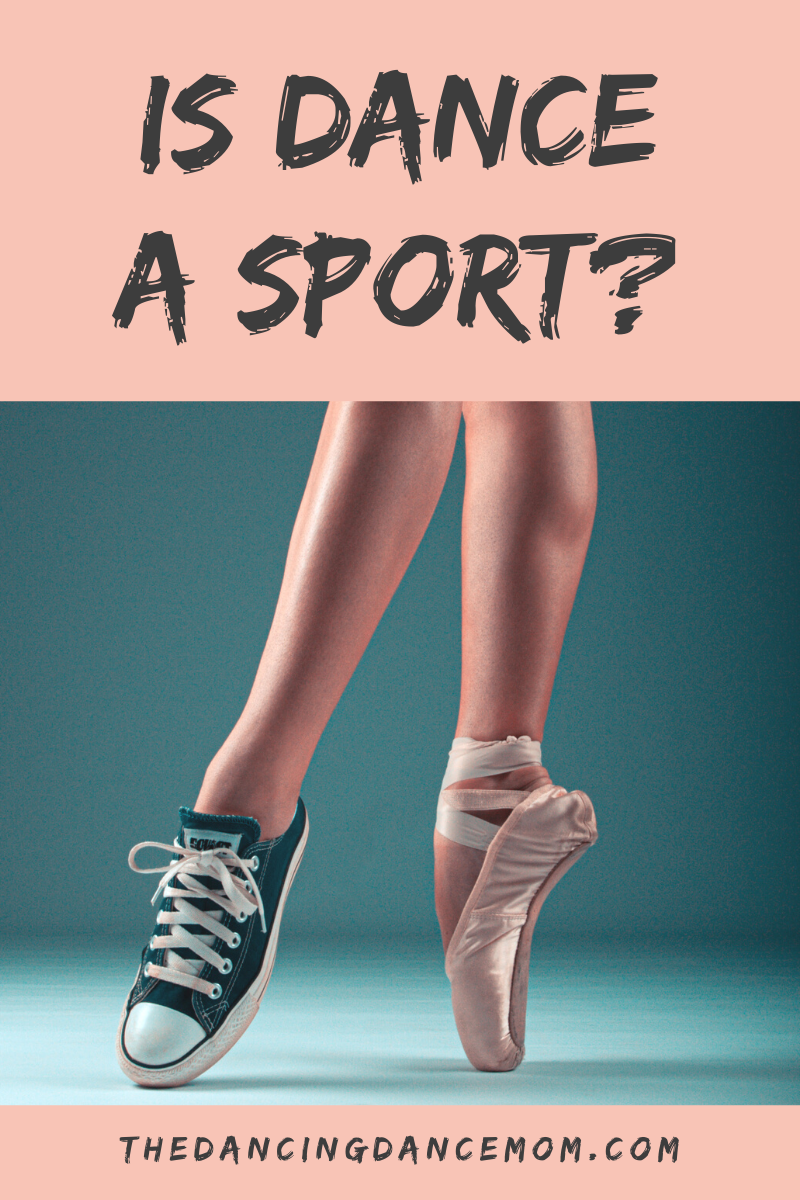
Is Competitive Dance A Sport?

A few years ago, in the dressing room of a competition, I looked down at the changing station of one of my girls’ teammates and saw this. I asked her if I could snap a picture; to me, it spoke volumes about the tears, sweat, and blood (literally) that goes into dance. At the time, I had no idea how I would use the picture. But I felt compelled to take it because of the intensity it conveyed.
When we think of the word “sport,” we often conjure images of teams battling it out on some sort of field or arena, over some sort of ball. According to Dictionary.com, a sport is “an athletic activity requiring skill or physical prowess and often of a competitive nature, as racing, baseball, tennis, golf, bowling, wrestling, boxing, hunting, fishing, etc.” If we focus on the “athletic activity…competitive nature” part, competitive dance certainly fits the bill.
The Five Components of Physical Fitness
Just like team sports, competitive dance requires countless hours of training in all aspects of physical fitness. Experts have identified five areas here: cardiovascular endurance, muscular strength, muscular endurance, flexibility, and body composition. Each aspect of physical fitness (or the lack of it) greatly impacts a dancer’s ability to perform to the best of their ability.
Dancers need to develop their cardiovascular endurance to last through intense, heart-pumping routines. When I think of muscular strength and endurance for dancers, I envision partner lifts, energetic hip-hop movements, and strong, precise placement in all genres. Anyone who has been to a dance competition has seen amazing feats of flexibility in virtually all categories; audiences tend to be wowed by solid needles, scorpions, and other movements that showcase flexibility. And because their bodies ARE their instruments (and are on full display in form-fitting costumes in front of an audience), competitive dancers tend to monitor their body composition closely and constantly.
Selling It Short?
But does classifying competitive dance as a sport shortchange it? After all, it encompasses so much more than just pure power and athleticism. Dancing requires a certain brand of artistry that you would be hard-pressed to find elsewhere. Dedicated choreographers go to great lengths to create movements that bring the music to life, striving to formulate a spot-on interpretation that the dancers are tasked with delivering.
Making a Connection
Along with that awesome responsibility, dancers are also expected to connect with the judges and audience to fully deliver the impact of the routine. Even the most subtle parting of lips, raising of a brow, or squinch of an eye can alter the choreographer’s vision substantially, so dancers need to be ever-conscious of their faces and bodies for the duration of their performance. Judges scrutinize every movement, every facial expression, and every aspect of body placement, hoping to be drawn in by the performers.
The Pressure of Precision
My son plays soccer and wrestles, and my daughters played soccer for a time as well. While I’ve seen them actively execute moves that drew upon the hours of training they’d received, there were hardly ever times that the movement HAD to be done in EXACTLY that way. With dance, there is a pressure to “do” the move in precisely one particular way; failing to do so takes away from the synchronization of the group. Judges’ eyes are likely to be drawn to a dancer that is not fully in sync with the others, so points will probably be deducted.
Keeping Up Appearances
I would be remiss if I didn’t mention this aspect of competitive dance that goes with our territory – appearances. Not only are dancers expected to execute fantastic feats of strength, flexibility, and endurance, but they must do so with gorgeous hair, flawless makeup, and revealing (and often uncomfortable) costumes!
Athletes’ uniforms are generally comfortable, having been carefully crafted for ease of movement and support. If we’re being honest, the same cannot be said for dance costumes (at least, most of them). Sequins dig into rib cages, straps cut into shoulders, layers of tulle irritate thighs, and much more.
If you still aren’t buying it, think about your favorite sports hero in the midst of an action pose. Now, mentally apply lipstick, eyelashes, and a perfectly coiffed hairdo to him or her. Then envision him or her finishing the movement, with the expectation that the lipstick won’t get smudged, the eyelashes will stay perfectly adhered from corner to corner, and the hairdo will remain intact. Pretty ridiculous, right? Yet, that’s what we have come to hope for with our competitive dancers.
The Verdict
Having coached both a team sport and a dance team, I would lean toward classifying competitive dance as a sport. The physical fitness and team dynamics (like interdependence, communication, and common goals) are all there, putting it on the same playing field (pun intended) as team sports like football, volleyball, tennis, and the like.
But it really is so much more than that – the artistry and presentation it requires adds other elements that more traditional team sports do not need to contend with. So categorizing it as a sport seems to sell it short.
Maybe a new term needs to be invented to convey the athleticism AND the artistry. “Spart,” perhaps?
Lessons learned from teammates can be the ones that stick with us forever. Here’s how Simone Biles gave us even more to look up to her for: 3 Important Lessons from Biles and Chiles.
Work hard, have fun! – Danielle
You May Also Like

Live From Our House, Part 2
June 26, 2020
Bigs and Littles – Partnering Up
March 16, 2022



14 Comments
Ayesha Ayub
I agree with you dancing is much more diffcult as compared to any sports. Dancers need to be perfect with everything from expressions to single move.
Kristin
I agree–it should totally be consider a sport. A beautiful, artistic one at that!
heather J jandrue
Dance is no different than any other thing that is a sport. It has all the elements of a sport and the dancers work just as hard as my hockey player or my martial artist!
Alexis Farmer
Haha I like spart! I can’t even begin to tell you how unbelievably impressive dancing is to me for all the reasons you just mentioned.
Lisa Manderino
I think it is more competetive than football!!!! Love that image with the shoes!
Tiffany
It is definitely under the sport umbrella!! So much training involved!
Terra Booth
Dance is absolutely a sport! My daughter was always completely exhausted after.
Lisa, Casey, Barrett Dog
Absolutely a sport. So much training and competition. That shoe picture is awesome!
Cecile Leger
Dancing is absolutely a difficult sport. Loved your shoe picture. It could be use to create a great poster 🤗
Cindy Moore
Oh yes I’d say competitive dance is a sport, and a challenging one at that! Your girls are athletes.
Kadi
Absolutely, dance is a sport! It offers alot of training, competition and a certain physical fitness level for sure!
Melissa Jones
It is definitely a sport! I absolutely agree with that!
Marianne
How someone could NOT classify competitive dance as a sport is beyond me! I have friends who are dance moms, and I don’t see much difference between them and the hockey moms! Hats off to you all!
Chelsea
There’s so much physical precision involved in dance that makes me agree with you and classify it as a sport. I think it actually never crossed my mind that it wasn’t! LOL!